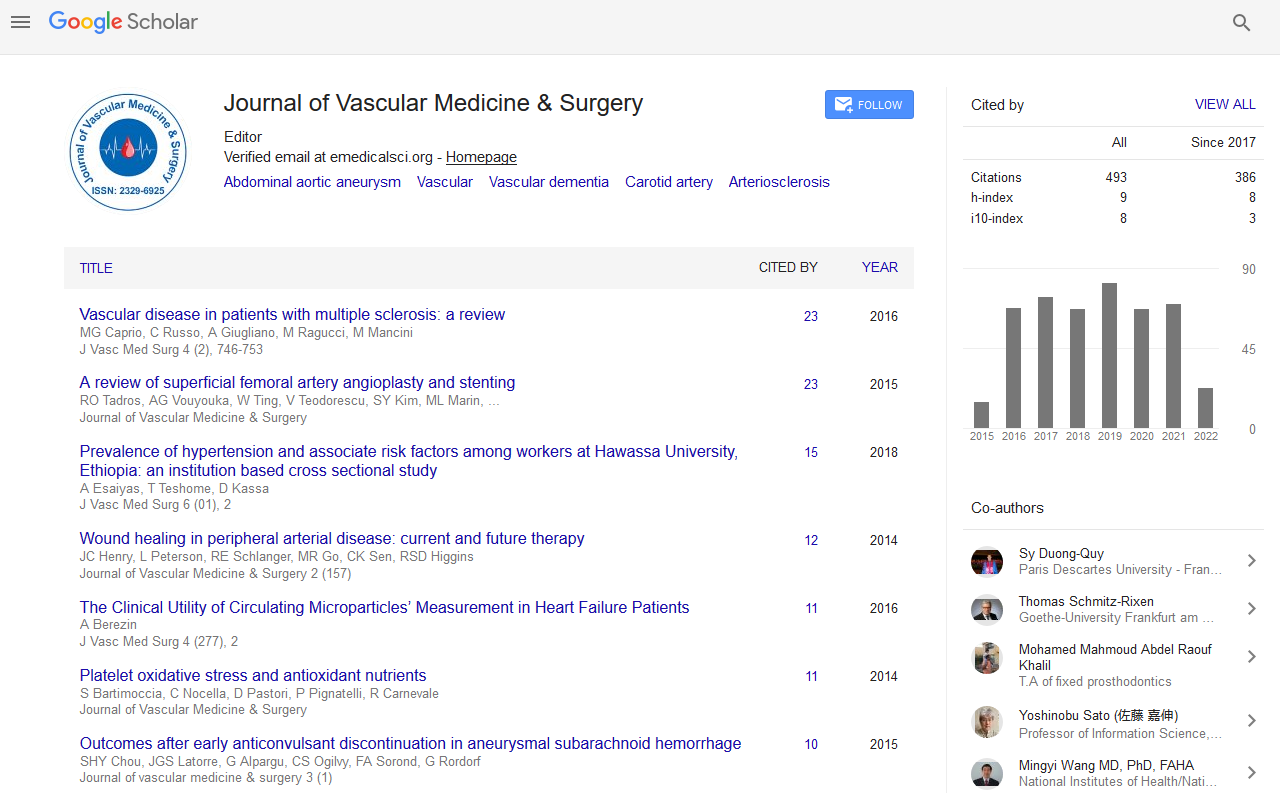Indexed In
- Open J Gate
- Academic Keys
- RefSeek
- Hamdard University
- EBSCO A-Z
- OCLC- WorldCat
- Publons
- Euro Pub
- Google Scholar
Useful Links
Share This Page
Journal Flyer

Open Access Journals
- Agri and Aquaculture
- Biochemistry
- Bioinformatics & Systems Biology
- Business & Management
- Chemistry
- Clinical Sciences
- Engineering
- Food & Nutrition
- General Science
- Genetics & Molecular Biology
- Immunology & Microbiology
- Medical Sciences
- Neuroscience & Psychology
- Nursing & Health Care
- Pharmaceutical Sciences
Abstract
Characterization of the Mechanical Properties of the Human Aortic Arch Using an Expansion Method
Marine Menut, Benyebka Bou-Said, Helene Walter-Le Berre, Philippe Vézin and Leila Ben Boubaker
Analyzing cardiovascular diseases leads to multidisciplinary problems which require transversal and complementary approaches. This study focuses on the identification of the mechanical properties of the aortic arch. Stereo-correlation technique is used to measure the strain field in the aortic arch during its expansion. The aorta is immersed in water which allows better results in terms of measurement method and to take into account the residual stress and strain effects. Results are obtained at different values of expansion: 9 samples are collected, 7 of them are frozen before the experiment and 2 are fresh. The mean age is 76 years old at the volunteers? time of death. 4 samples did not lead to conclusive results because of the quality of the arterial wall and leaks that happened during the experiment preventing a proper expansion. The horizontal and vertical displacements are relatively homogeneous for all the samples: two preferred radial and longitudinal directions are observed. The strain fields associated with these directions show heterogeneities and have significant differences between fresh and frozen specimen. The final objective is to perform virtual surgical simulation of the whole endovascular stent graft procedure for an aortic aneurysm. This procedure has a high rate of short-term success and its indication compared to open surgery is increasing but it needs to be more reliable and secure. In this context, it is important to identify the mechanical properties of the aorta for further numerical simulations.


